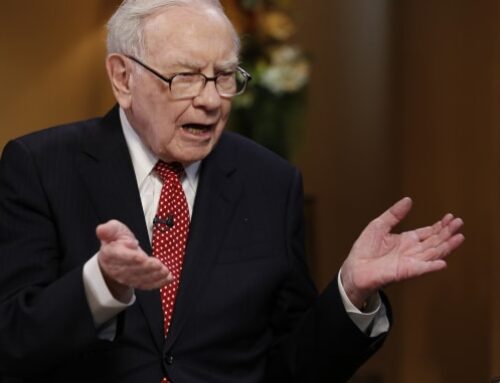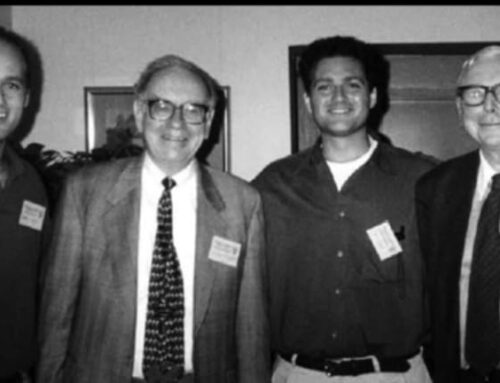This letter wrote on July 6, 1962.
During the time leading up to the Kennedy Slide of 1962, the economy was experiencing a rapid expansion. From February 1951 to December 1959, the real GDP of the United States rose significantly. Stock prices had been steady since the late 1940s, and when John F. Kennedy took office in 1961, he promised that the recovery would continue. Instead, after continuing to rise through December 1961, the stock market experienced a massive decline. Through June 1962, the S&P 500 experienced a 22.5% decline. The Dow Jones Industrial Average dropped 5.7% on May 28, 1962, in what was termed the “Flash Crash of 1962.”
This was the situation when warren Buffett was writing this letter.
He is not the one who likes to predict, but when he expects, there is some meaning.
In my letter of January 24, 1962 reporting on 1961, I inserted a section entitled. “And a Prediction.” While I have no desire to inflict cruel and unusual punishment upon my readers, nevertheless, a reprinting of that section, in its entirety, may be worthwhile:
Regular readers (I may be flattering myself) will feel I have left the tracks when I start talking about predictions. This is one thing from which I have always shied away and I still do in the normal sense.
I am certainly not going to predict what general business or the stock market are going to do in the next year or two since I don’t have the faintest idea.
I think you can be quite sure that over the next ten years there are going to be a few years when the general market is plus 20% or 25%, a few when it is minus on the same order, and a majority when it is in between. I haven’t any notion as to the sequence in which these will occur, nor do I think it is of any great importance for the long-term investor.
Over any long period of years, I think it likely that the Dow will probably produce something like 5% to 7% per year compounded from a combination of dividends and market value gain. Despite the experience of recent years, anyone expecting substantially better than that from the general market probably faces disappointment.
Our job is to pile up yearly advantages over the performance of the Dow without worrying too much about whether the absolute results in a given year are a plus or a minus. I would consider a year in which we were down 15% and the Dow declined 25% to be much superior to a year when both the partnership and the Dow advanced 20%. I have stressed this point in talking with partners and have watched them nod their heads with varying degrees of enthusiasm.
It is most important to me that you fully understand my reasoning in this regard and agree with me not only in your cerebral regions, but also down in the pit of your stomach.
In the next paragraph, he also mentioned.
Specifically, if the market should be down 35% or 40% in a year (and I feel this has a high probability of occurring one year in the next ten–no one knows which one), we should be down only 15% or 20%. If it is more or less unchanged during the year, we would hope to be up about ten percentage points. If it is up 20% or more, we would struggle to be up as much.
As outlined in Appendix B, showing combined predecessor partnership results, during the first half of 1962 we had one of the best periods in our history, achieving a minus 7.5% result before payments to partners, compared to the minus 21.7% overall result on the Dow. This 14.2 percentage points advantage can be expected to widen during the second half if the decline in the general market continues, but will probably narrow should the market turn upward. Please keep in mind my continuing admonition that six-months’ or even one-year’s results are not to be taken too seriously. Short periods of measurement exaggerate chance fluctuations in performance.
Past letters have stressed our belief that the Dow is no pushover as a yardstick for investment performance. To the extent that funds are invested in common stocks, whether the manner of investment be through investment companies, investment counselors, bank trust departments, or do-it-yourself, our belief is that the overwhelming majority will achieve results roughly comparable to the Dow. Our opinion is that the deviations from the Dow are much more likely to be toward a poorer performance than a superior one.
To illustrate this point, we have continually measured the Dow and limited partners’ results against the two largest open-end investment companies (mutual funds) following a program of common stock investment and the two largest closed-end investment companies. The tabulation in Appendix C shows the five -years’ results, and you will note the figures are extraordinarily close to those of the Dow.
… the two mutual funds both did poorer than the Dow, with Massachusetts Investors Trust having a minus 23% overall performance, and Investors Stock Fund realizing a minus 25.4%. This is not unusual as witness the lead article in the WALL STREET JOURNAL of June 13, 1962 headed “Funds vs. Market.” Of the 17 large common stock funds studied, everyone had a record poorer than the Dow from the peak on the Dow of 734, to the date of the article, although in some cases the margin of inferiority was minor.
…The three large “growth” (the quotation marks are more applicable now) funds with the best record in the preceding few years, Fidelity Capital Fund, Putnam Growth Fund, and Wellington Equity Fund averaged an overall minus 32.3% for the first half. It is only fair to point out that because of their excellent records in 1959-61, their overall performance to date is still better than average, as it may well be in the future. Ironically, however, this earlier superior performance had caused such a rush of new
investors to come to them that the poor performance this year was experienced by very many more holders than enjoyed the excellent performance of earlier years. This experience tends to confirm my hypothesis that investment performance must be judged over a period of time with such a period including both advancing and declining markets.


